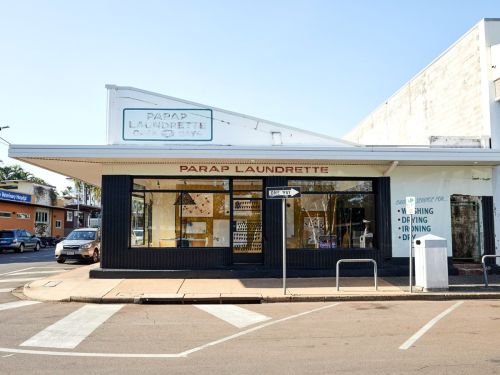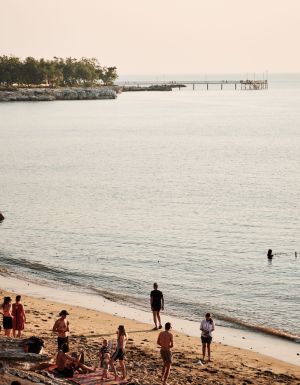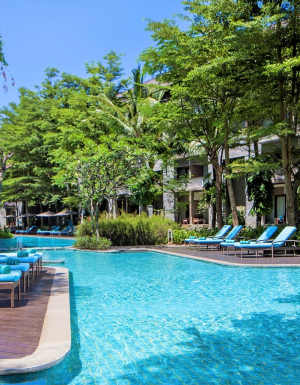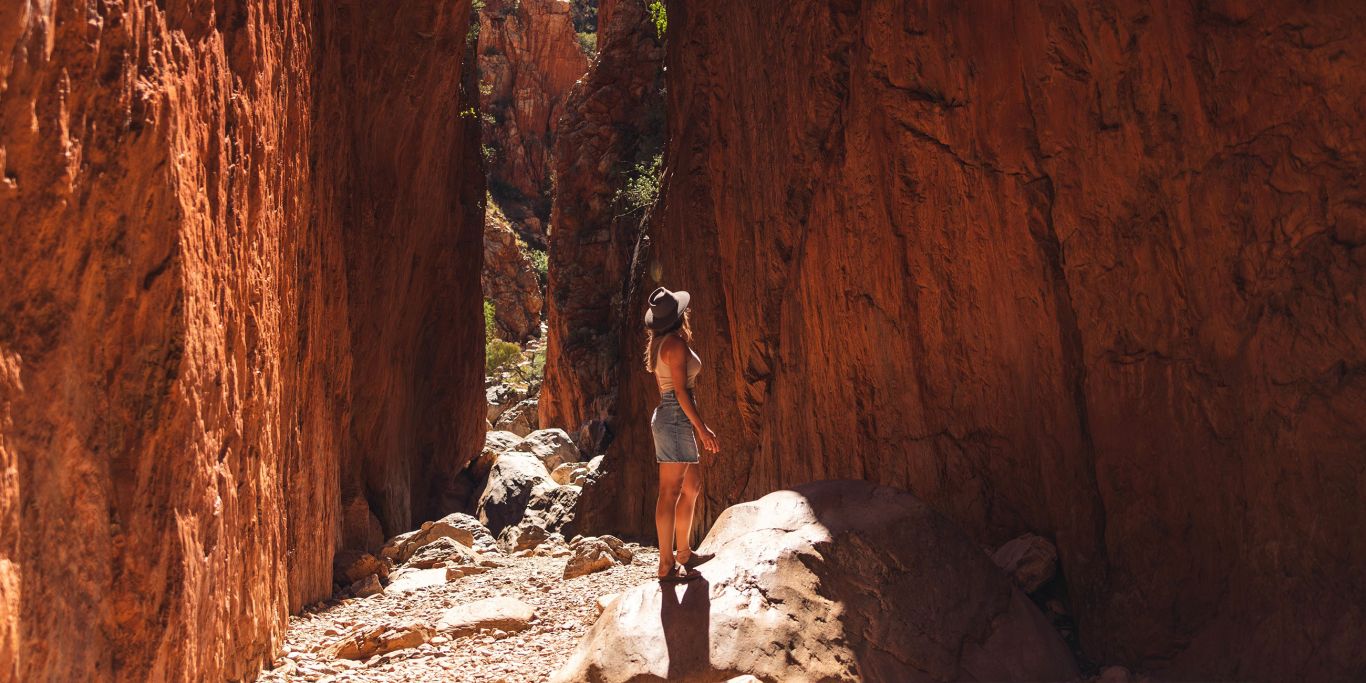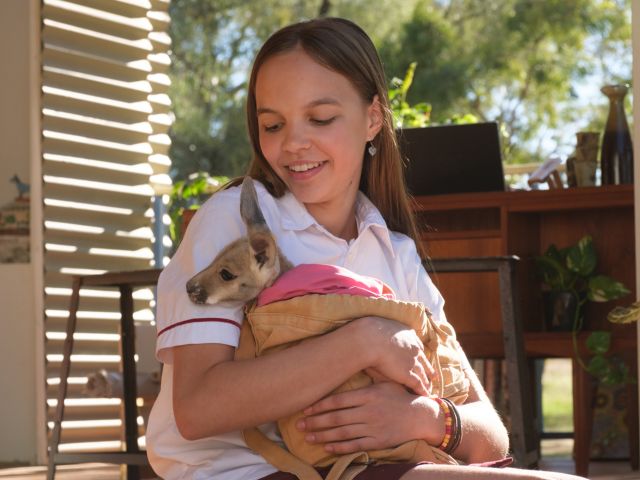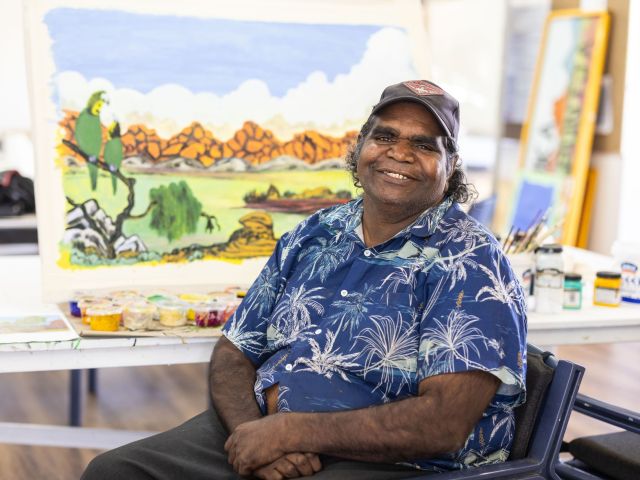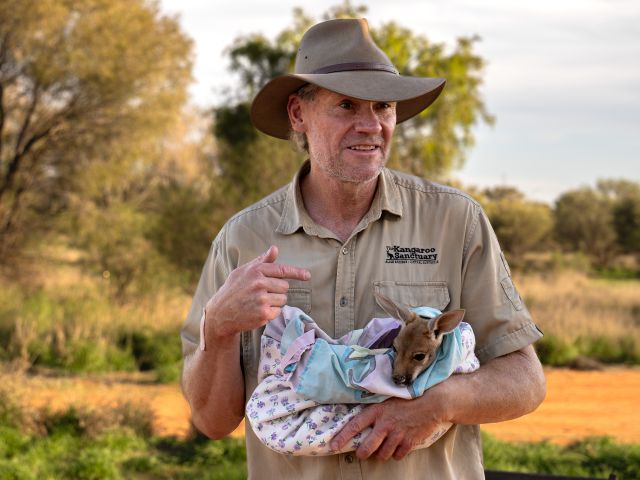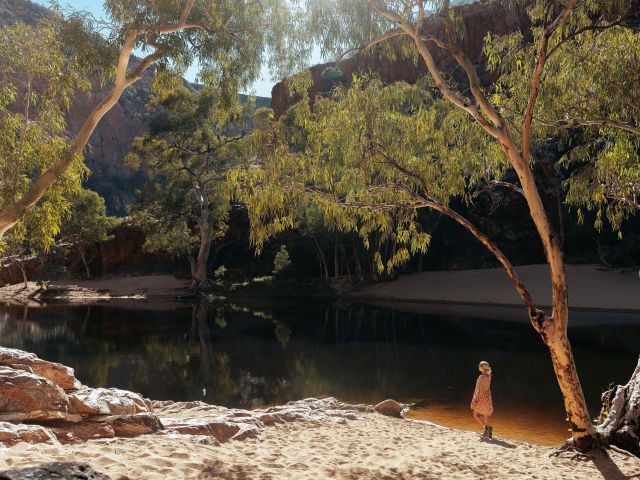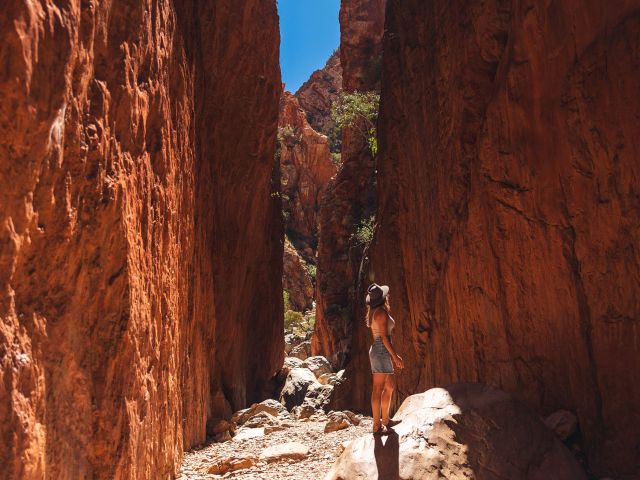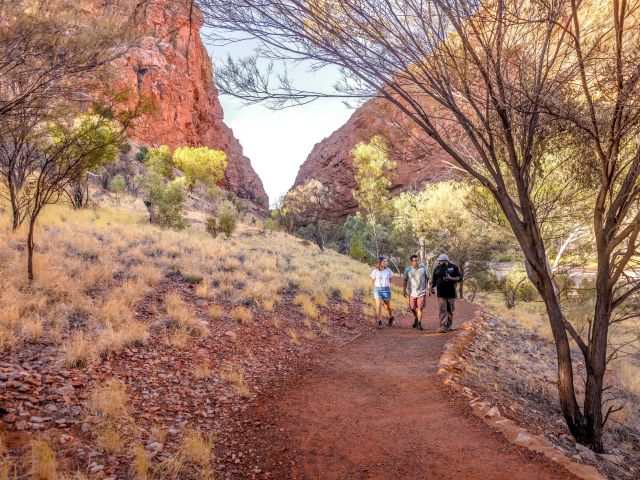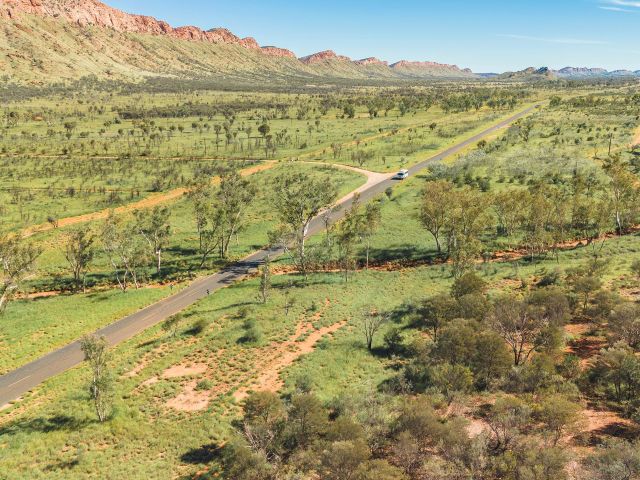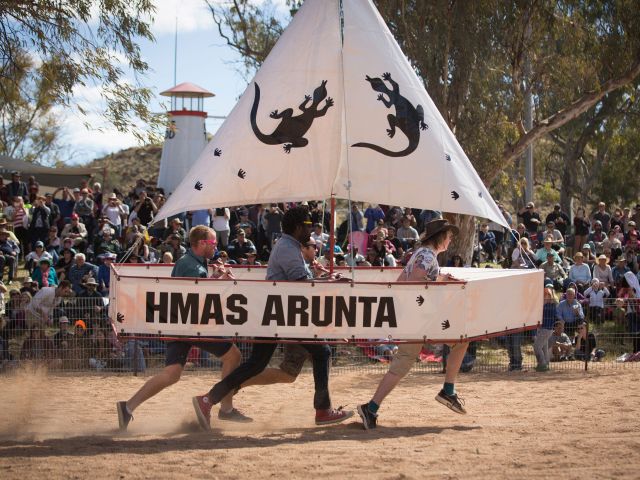For fun-loving visitors to Darwin, the village of Parap gives plenty of reasons to linger. From shops with handcrafted trinkets to a new art space housed in an old laundromat and a famous Saturday market, here are a bunch of reasons to get onboard.
On Larrakia Land in a place once home to locomotive workshops and a civilian airfield, the hub of Parap has surfaced as a funky and fun place to visit (or call home). Located a mere 10-minute drive from Darwin’s city centre, this multicultural suburb is just a hop, skip and jump away from beaches, sea breezes and sunsets. Home to Southeast Asian, Torres Strait Islander and plenty more communities, this cultural melting pot is celebrated each Saturday morning at the market.
“A visit to the market is a big part of the locals’ weekend routine and is a kaleidoscope of cultures," says celebrated Chinese-Sri Lankan restaurateur Jimmy Shu. “Every Saturday the friendly vendors serve up such a great mix of international cuisine, freshly plucked fruit and vegetables, artisan breads, acai bowls and pretty much everything in between."
Once you’re full to the brim with fluffy roti canai, popiah, steaming laksa, stuffed chicken wings and mango smoothies, history buffs might like to go off the beaten track. On Macdonald Street, you will find the heritage-listed former Qantas hangar – now bursting at the seams with dreamy vintage cars thanks to the Darwin Motor Vehicle Enthusiasts Club. Rewind to 1934, and ladies and gents just arrived from Europe via Singapore on Qantas’ DH86 service could have been disembarking right here. From London to Parap: it is intriguing to think Darwin was a critical link between Europe and Australia before modern aircraft could fly long distances non-stop.
The Traditional Owners of the Darwin region, the Larrakia people, are believed to have originally called this land Bun-Durik after the black cockatoos that visited the waterholes in the area. The village has also been known as ‘Two and a half mile’ (Parap is five kilometres from the city centre) and eventually earned its name in 1919. Fast-forward to the present day, and with a multimillion-dollar ‘village improvement plan’ underway, Darwin’s historical and beloved precinct is a fast-evolving gem worth watching.
1. Shop, dine and be entertained at Parap Markets
This magical market is one of Darwin’s best and it attracts hundreds of people each Saturday, offering a multicultural feast, live entertainment and a laksa worth getting on a plane for. Follow the aroma of lemongrass and galangal and you will soon find Mary’s Laksa. Mary (Guo Yang Lei) has been dishing out exemplary bowls of the noodle soup for two decades. “Everything is homemade, I make everything from scratch each week," Mary says as she prepares my chicken laksa. But the market is more than laksa – it is also an artistic hub with stalls overflowing with tempting artworks, jewellery, bags and clothes.

2. Brunch at Laneway Speciality Coffee
Parap is home to one of the city’s hottest brunch spots. Snag a spot at the communal table in the aircon or head outside at Laneway Specialty Coffee on Vickers Street for an excellent Campos Coffee and a bite from the all-day menu. Dishes include organic buckwheat hotcakes with native Kakadu plum, heirloom garlic mushrooms and poached eggs with native pepper berry hollandaise.

3. Soak up tropical vibes at Hudson Parap
Hudson Parap is a short walk from the Parap markets and boasts 84 modern self-contained one- to three-bedroom apartments.

You will spot plenty of black-and-white photos of aviator and Qantas founder Hudson Fysh adorning the walls. You can walk to the Qantas hangar nearby or, when the tropical heat gets too much, head to Parap Pool or the onsite Hudson pool.

4. Purchase Indigenous artworks at Outstation Gallery
Venture upstairs at 8 Parap Place to Outstation Gallery , where you’ll find works by local and established Indigenous artists from remote communities across the NT and Kimberley. Outstation has a well-earned reputation for excellence in art and in its fair dealing with artists, art centres and communities. Pieces range from bark paintings and hollow logs to fibre art and acrylic artworks.

5. Pick up fresh blooms at Little Miss Flowers
Enter this dreamy pink shop on Parap Road and you’ll find lilies, sunflowers and orchids alongside native seasonal blooms arranged with eucalyptus. Little Miss Flowers is the perfect place to pick up a gift – from candles to pot plants to books – and stocks a large selection of house-dried and preserved flowers, perfect for those hot, humid Darwin days.

6. Browse artisan items at The Local
If you want to soak up Territory talent by the bucket load, make a beeline for The Local , which boasts a vibrant space where more than 35 local artisans exhibit and sell their work. Think homewares, jewellery, paintings, drawings, sculpture and more.

7. Find curated works at Laundry Gallery
A good day out in Parap must include a visit to this Aboriginal-owned multidisciplinary creative hub that puts a new spin on old stories.

Housed in a reimagined 1970s-era laundromat , exhibitions cycle through monthly, with a curated selection of artisan works available in-store and online.

8. Refuel at Mad About Coffee
As its name suggests, this cafe takes its coffee seriously. Whether you’re after a creamy flat white, a jet-fuelled long black or something in between, Mad About Coffee will keep you caffeinated. For a small cafe, this gem punches above its weight. As well as the usual black or white coffees, it offers barista courses, a huge array of tea and coffee paraphernalia and a heap of coffee beans to take home.

9. Witness art exhibitions at the Northern Centre for Contemporary Art
Hidden down Vimy Lane in Parap, the NCCA is an independent arts organisation that boasts a friendly vibe and offers a fabulous respite from the tropical heat.

Its exhibitions rotate regularly, ensuring there’s always something fresh and new to experience.

10. Stock up on your picnic fare at Parap Fine Foods
In 1968, Paul and Rene Pantazis established Parap Fine Foods in the heart of the village. And that family tradition continues today, with their granddaughter Larena a proud worker at the store. From the famous deli to the aisles of gourmet groceries, Parap Fine Foods is the place to stock up on your picnic fare.

Don’t forget to pop into the wine room that stocks varieties from near and far, from the Barossa Valley to Bordeaux. Once you’ve hunted and gathered, you will be counting down the hours to those sunset drinks on the balcony of your Hudson Parap apartment.

Uncover more of Darwin’s best experiences in our travel guide to the Top End city.


